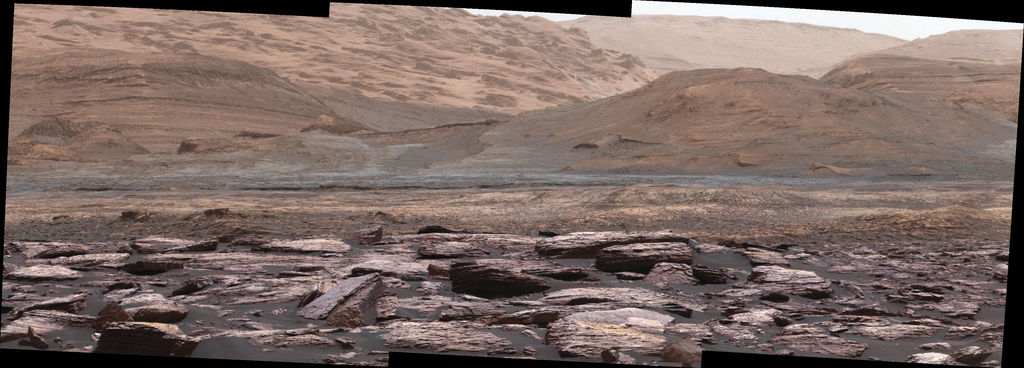
NASA held another press briefing yesterday about the latest findings from the Curiosity rover on Mars, detailing new evidence that this former lake environment was once quite hospitable for possible life. The findings were announced from the fall meeting of the American Geophysical Union in San Francisco. In a related development, there is also new evidence from Curiosity that organics have not only been definitively found by the rover, but that they may be more widespread on Mars than previously thought.
Curiosity has been gradually climbing the outer lower slopes of Mount Sharp, and the farther it travels the more clues it discovers about how the Martian environment has changed over time. The rover has been examining the abundances of clay minerals, hematite, and other minerals and how they differ in various regions. As the Curiosity twitter account noted, “I’m reading you like a book, Mars.”
“There is so much variability in the composition at different elevations, we’ve hit a jackpot,” said former Curiosity Project Scientist John Grotzinger, in Pasadena, Calif.
The higher up the rover climbs, the younger the sedimentary layers are. Curiosity has found evidence for not only the old lakebeds but also extensive groundwater. Such an environment, where other evidence has also suggested the water was not too salty or acidic, would have been ideal for at least microscopic life, if it ever existed.
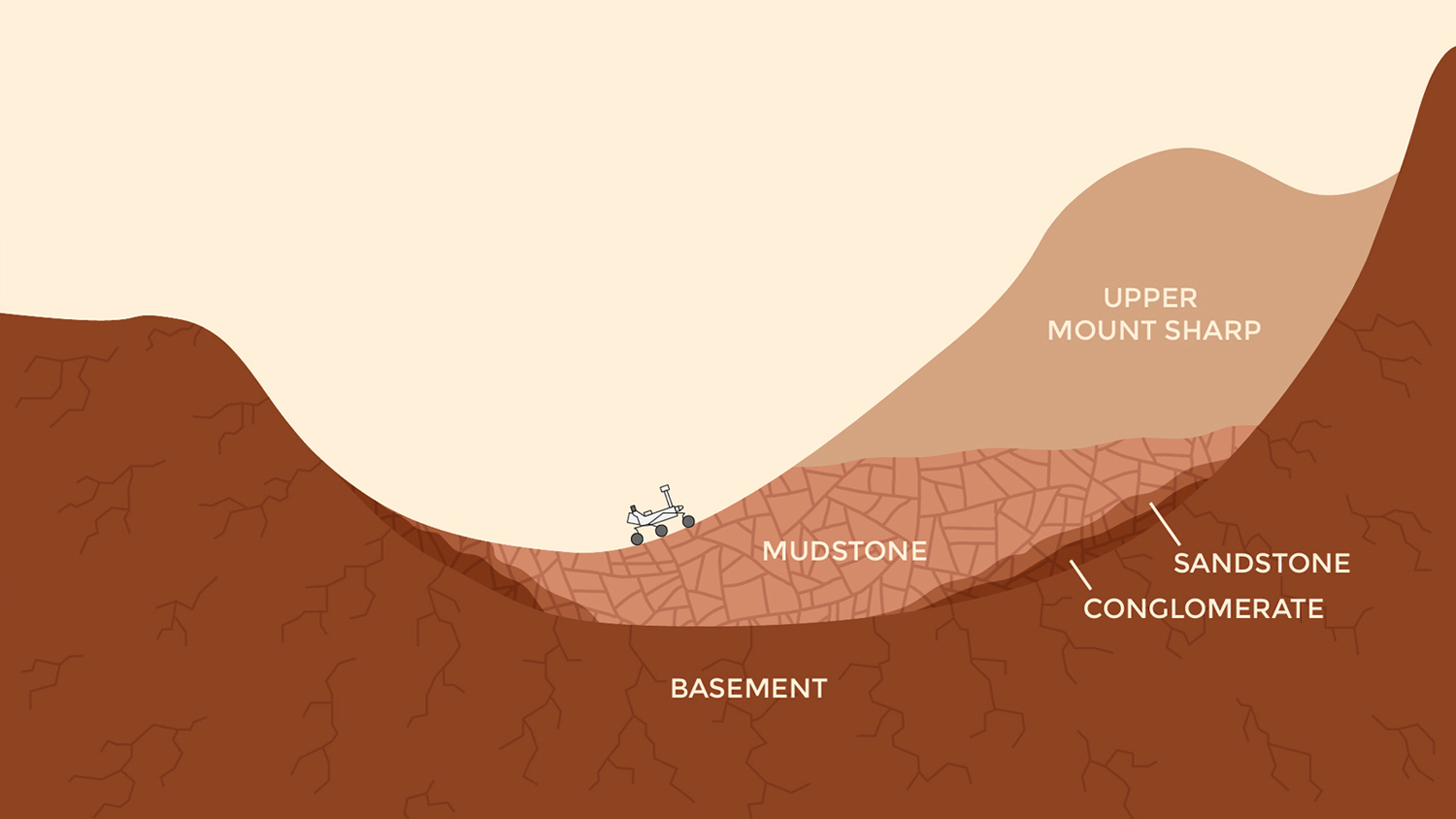
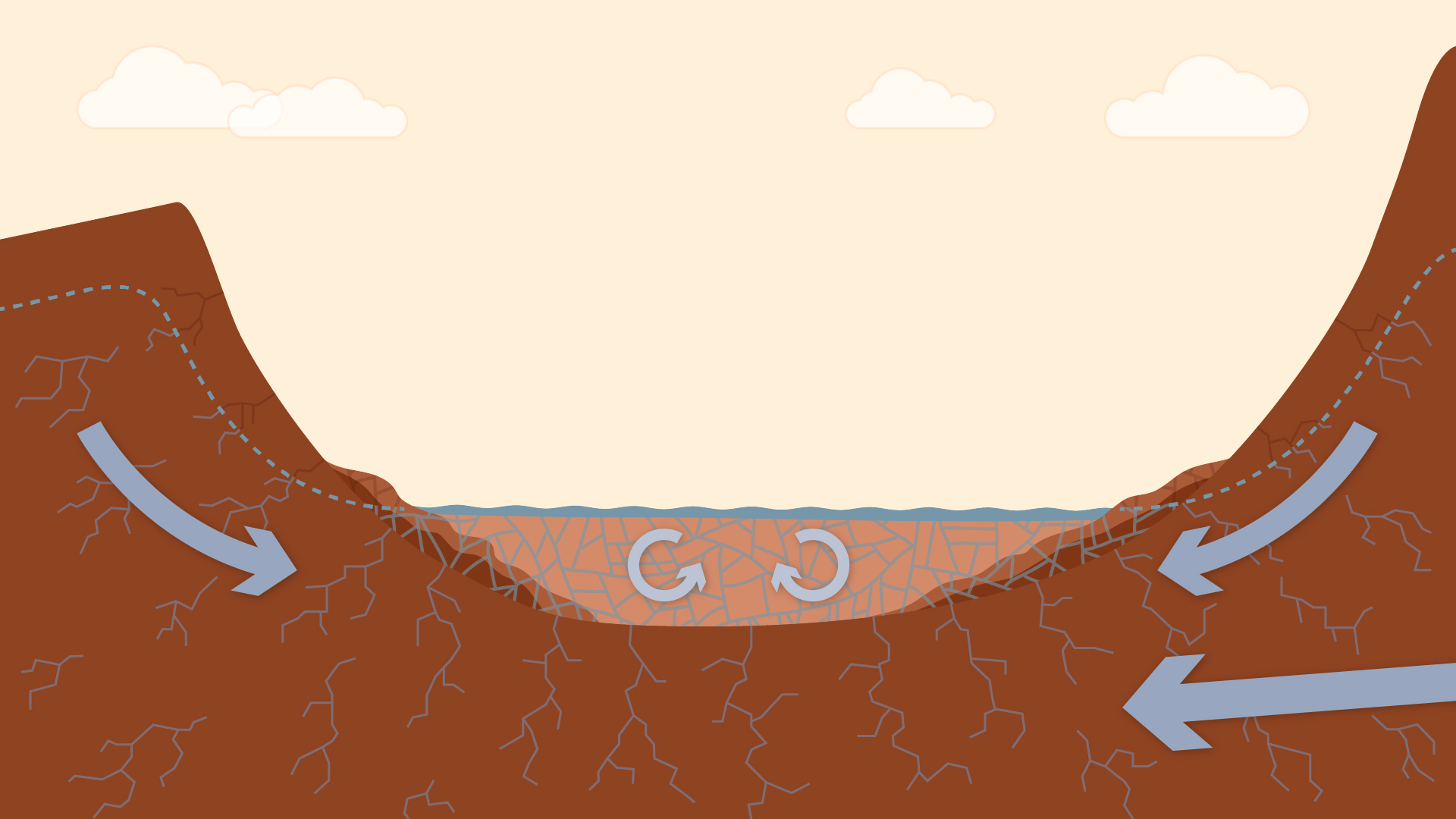
“A sedimentary basin such as this is a chemical reactor,” Grotzinger said. “Elements get rearranged. New minerals form and old ones dissolve. Electrons get redistributed. On Earth, these reactions support life.”
Curiosity has taken rock samples from 15 different drill sites now, each one adding another piece of the puzzle. The four most recent drilling sites, from “Oudam” last June through to “Sebina” last October, are each spaced about 80 feet (25 meters) apart in elevation.
“We are well into the layers that were the main reason Gale Crater was chosen as the landing site,” said Curiosity Deputy Project Scientist Joy Crisp of NASA’s Jet Propulsion Laboratory in Pasadena, Calif. “We are now using a strategy of drilling samples at regular intervals as the rover climbs Mount Sharp. Earlier we chose drilling targets based on each site’s special characteristics. Now that we’re driving continuously through the thick basal layer of the mountain, a series of drill holes will build a complete picture.”
One of the key minerals that Curiosity has found is hematite. It has been found to be more common in recent samples taken than the less-oxidized magnetite, which was dominant in the older lake-bottom sediments examined earlier.
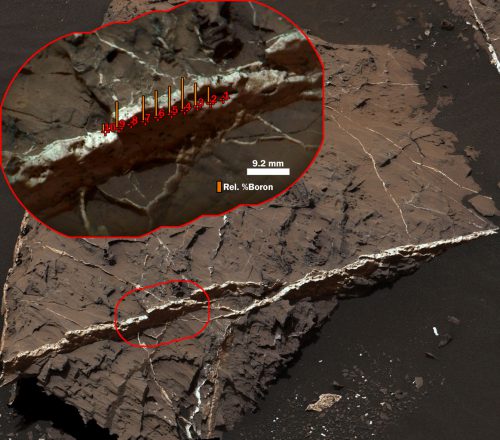
“Both samples are mudstone deposited at the bottom of a lake, but the hematite may suggest warmer conditions, or more interaction between the atmosphere and the sediments,” said Thomas Bristow of NASA Ames Research Center in Moffett Field, Calif.
Curiosity has also found another element recently, boron, within the mineral veins seen in many of the rocks examined by the rover. This is the first time it has been detected by any Mars rover or lander.
“No prior mission has detected boron on Mars,” said Patrick Gasda of the U.S. Department of Energy’s Los Alamos National Laboratory in Los Alamos, N.M. “We’re seeing a sharp increase in boron in vein targets inspected in the past several months.”
Boron is significant since, on Earth, it is common in arid regions where water has evaporated away. It is also a key building block of life on Earth. On Earth, boron is tied to the formation of ribose, a key component of RNA. Scientists are still figuring out how the boron got into the mineral veins. Right now, there are two main theories: Evaporation of a lake formed a boron-containing deposit in an overlying layer (not yet reached by Curiosity), then the water later re-dissolved the boron and carried it down through fractures into older layers. There, it accumulated along with other fracture-filling vein minerals. The other idea is that perhaps changes in the chemistry of clay-bearing deposits, such as evidenced by the increased hematite, affected how groundwater picked up and dropped off boron within the local sediments.
“Variations in these minerals and elements indicate a dynamic system,” Grotzinger said. “They interact with groundwater as well as surface water. The water influences the chemistry of the clays, but the composition of the water also changes. We are seeing chemical complexity indicating a long, interactive history with the water. The more complicated the chemistry is, the better it is for habitability. The boron, hematite and clay minerals underline the mobility of elements and electrons, and that is good for life.”
Although not discussed in the press briefing today, Curiosity has also been making good progress in the search for organic material. In fact, mission scientists now think that such organics are “all over Mars.”
“I am convinced that organics are all over Mars,” said Jennifer Eigenbrode, a biogeochemist and geologist at NASA’s Goddard Space Flight Center in Greenbelt, Md.
“They’re all over the surface and they’re probably through the rock record. What that means is something we’ll have to talk about,” Eigenbrode said last week during a National Academy of Sciences workshop which focused on the search for life elsewhere.
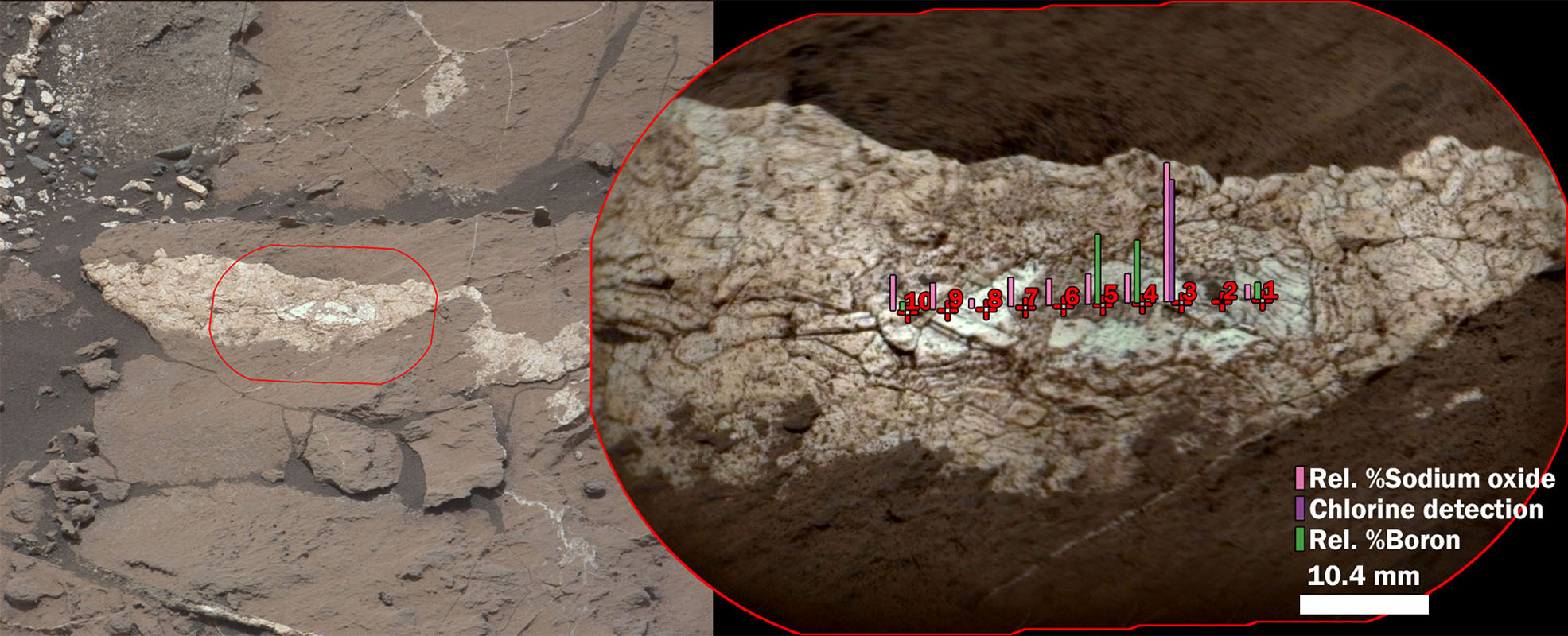
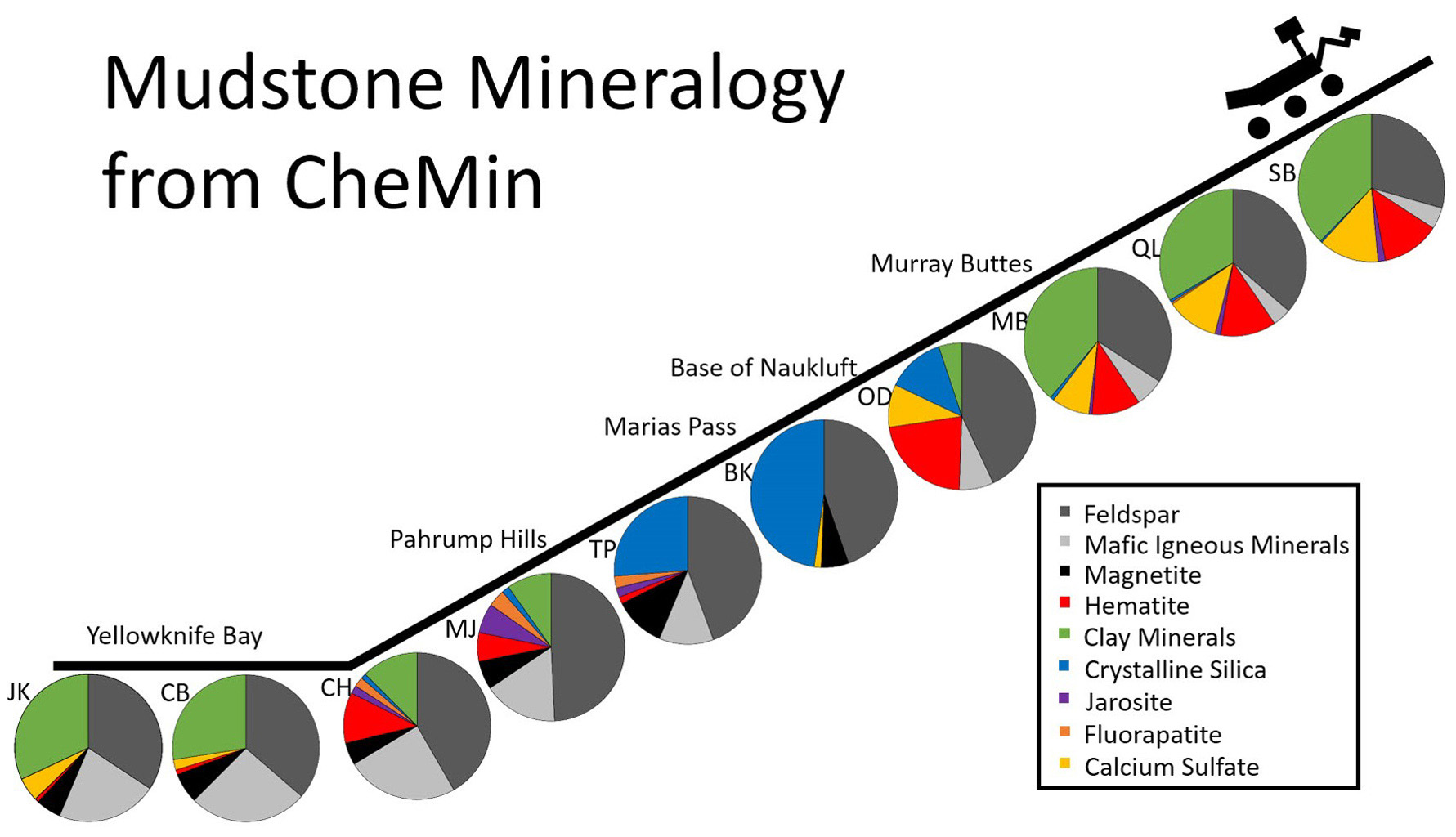
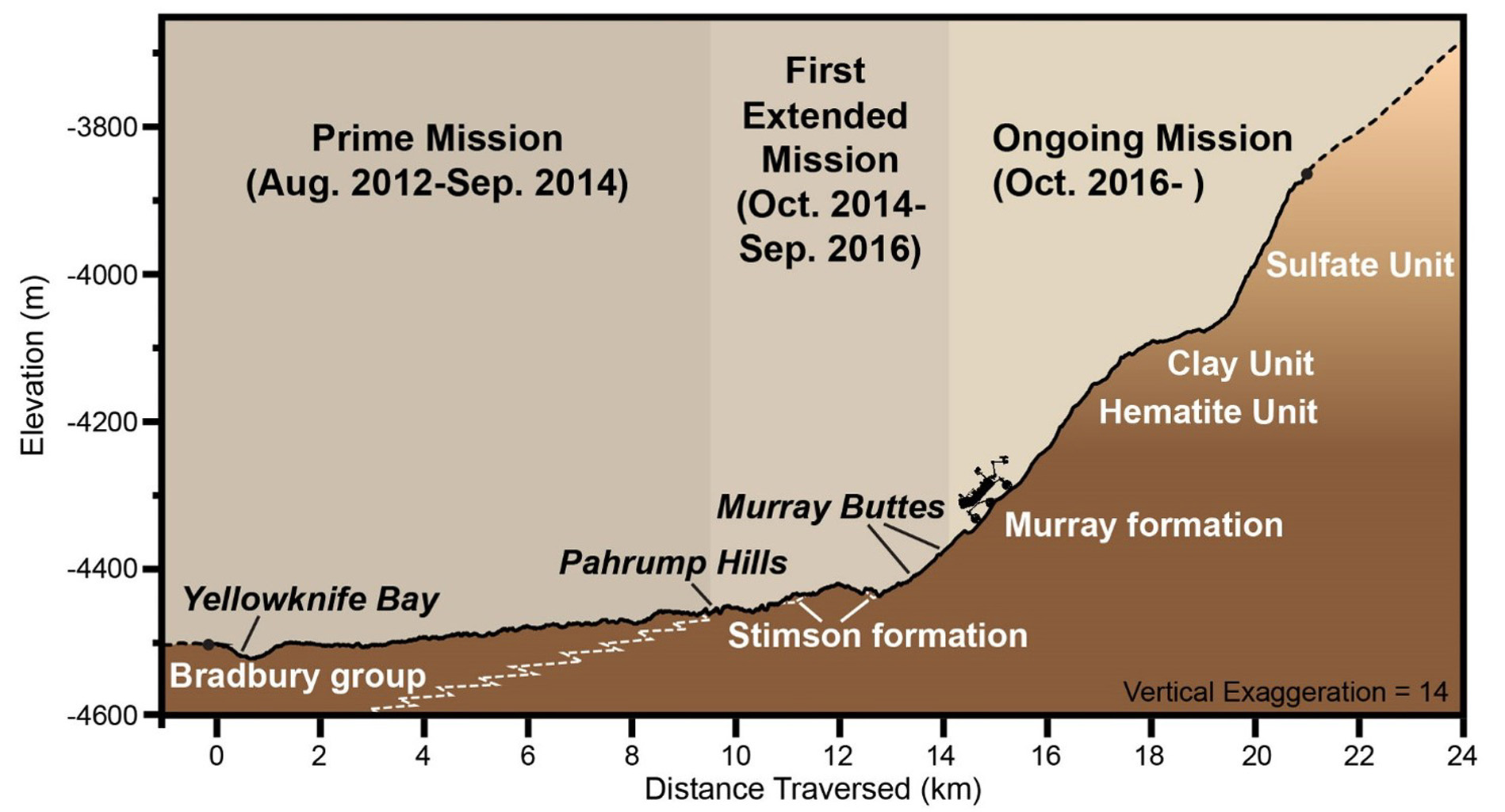
Eigenbrode also noted that the rocks contain more complex organic macromolecules. On Earth, about 70 to 90 percent of organic matter is macromolecular. The organics themselves do not directly answer the question of whether life ever existed on Mars, since it is not known if they are biological in origin or not, but they do provide valuable clues, especially if they are widespread on the planet. Scientists are also pondering how they have been able to survive this long in the harsh radiation on Mars’ surface, even though they were found in rocks drilled by the rover.
“To me this is the biggest take-home message. Four years ago, we would never have said this,” Eigenbrode said. “That organic matter could be really important,” she also noted. “The door is really open here to an expanded habitability potential.”
It was also noted by Grotzinger that silica-rich rocks, which Curiosity has also found, are ideal for preserving microscopic fossils, at least on Earth.
“Silica is the great material on Earth that survives everything,” Grotzinger said. “If you have it precipitate early on, it is capable of preserving the things you’re most interested in and apparently Mars is making this stuff.”
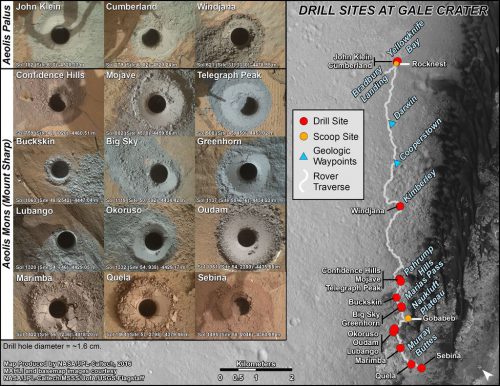
Curiosity has revolutionized our understanding of Mars; in addition to the old lakebeds and organics, it has found evidence for an ancient oxygen-rich atmosphere, visited massive sand dunes and buttes, discovered evidence for a possible “continental crust” and possible liquid water brines, and found biochemically accessible nitrogen and measured current methane in the atmosphere. It may even have already found evidence for past microbial life, although the jury is still out on that one.
Recently, the rover has been experiencing some problems with its drill, where a fault was detected during the early stages of the drilling commands and “the drill feed mechanism did not extend the drill to touch the rock target with the bit.”
“We are in the process of defining a set of diagnostic tests to carefully assess the drill feed mechanism. We are using our test rover here on Earth to try out these tests before we run them on Mars,” said Curiosity Deputy Project Manager Steven Lee, at the Jet Propulsion Laboratory. “To be cautious, until we run the tests on Curiosity, we want to restrict any dynamic changes that could affect the diagnosis. That means not moving the arm and not driving, which could shake it.”
As to what happened with the drill, the two main theories right now are that a brake on the drill feed mechanism did not disengage fully or an electronic encoder for the mechanism’s motor did not function properly. Engineers are confident they can fix the problem, but first they must determine why the motor did not work properly.
The drill feed mechanism pushes the front of the drill outward from the end of Curiosity’s robotic arm. The drill then collects samples of powdered rock that is analyzed by the laboratory instruments onboard the rover.
All is not lost for the time being, however.
“We still have percussion available, but we would like to be cautious and use it for targets where we really need it, and otherwise use rotary-only where that can give us a sample,” said Curiosity Project Scientist Ashwin Vasavada at JPL.
Curiosity has now driven a total of 9.33 miles (15.01 kilometers) since landing in Gale crater in August 2012. It has also climbed 541 feet (165 meters) in elevation so far since landing.
Additional images from the AGU presentation can be seen here, and more information about the Curiosity mission is available here.
Be sure to “LIKE” AmericaSpace on Facebook and follow us on Instagram & Twitter!




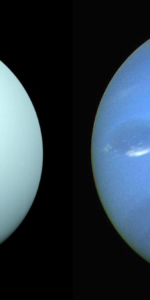

These findings, while not conclusive, certainly point to life being ubiquitous throughout the universe. Exciting times of exploration and discovery.